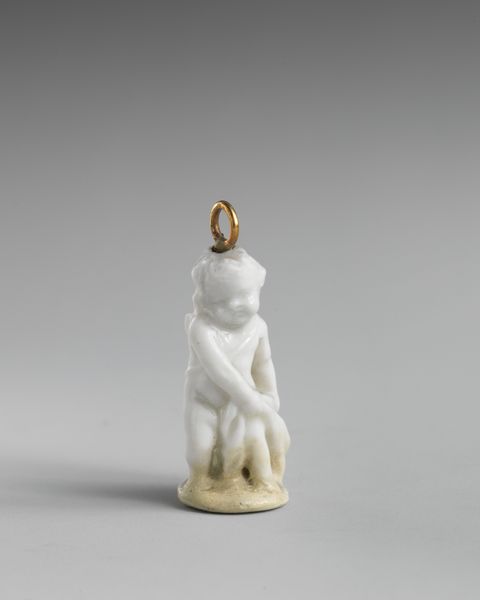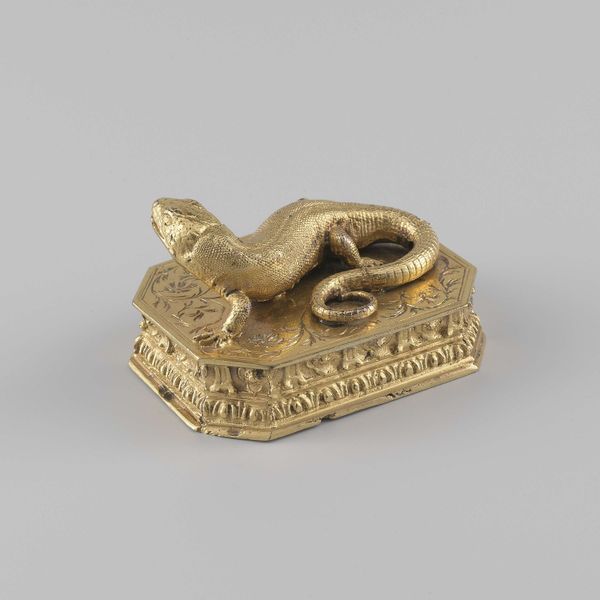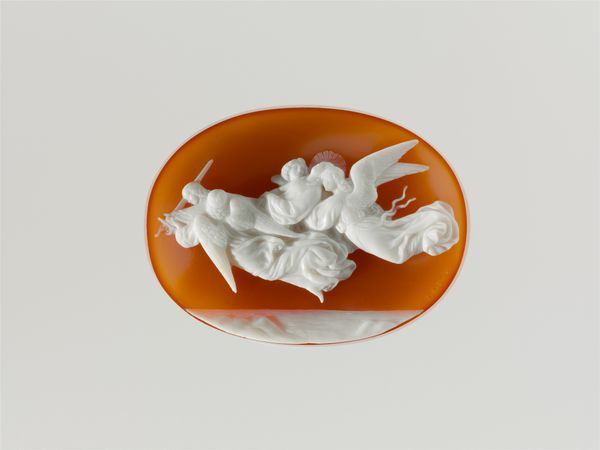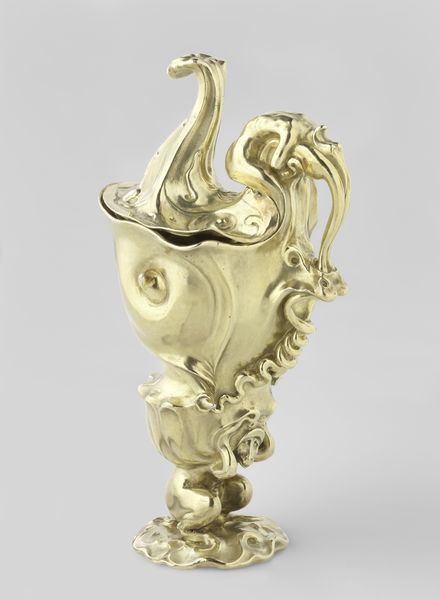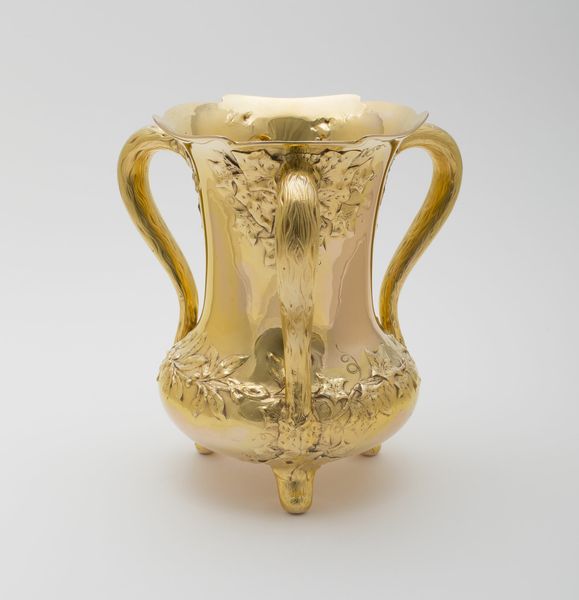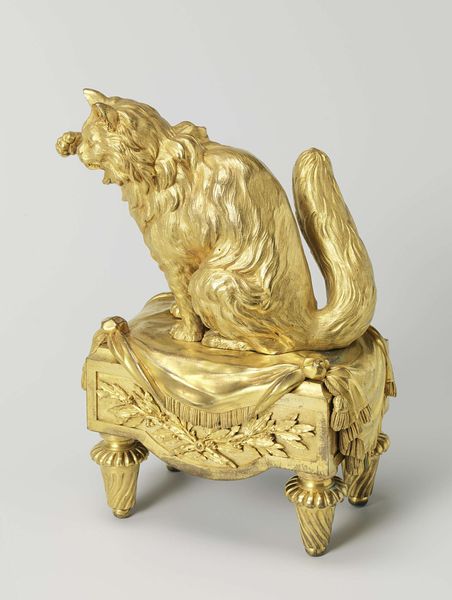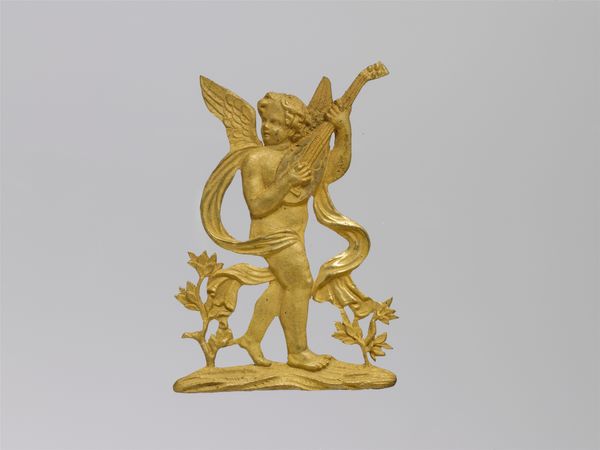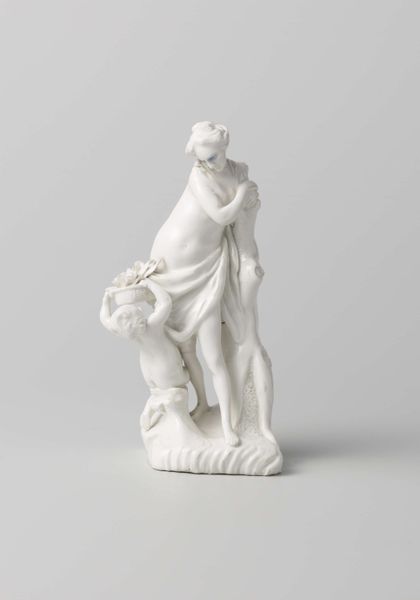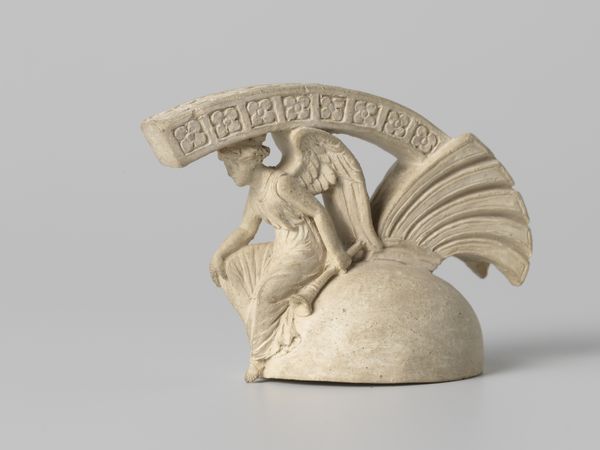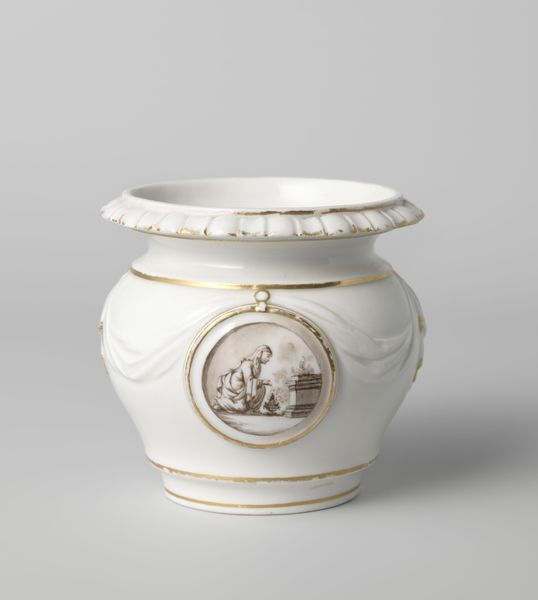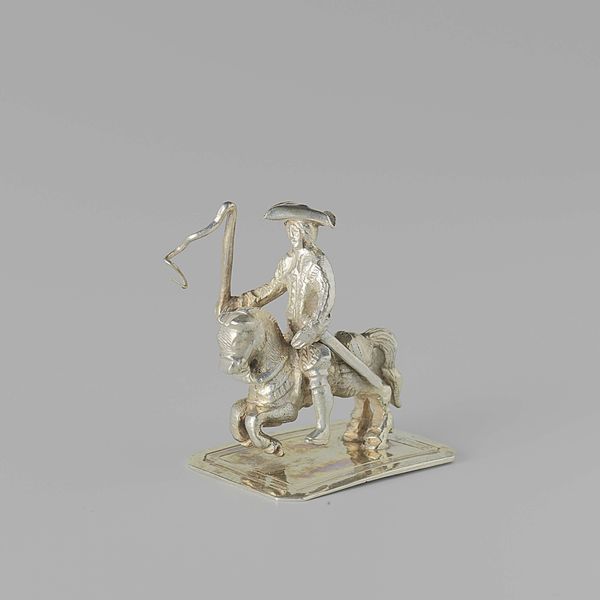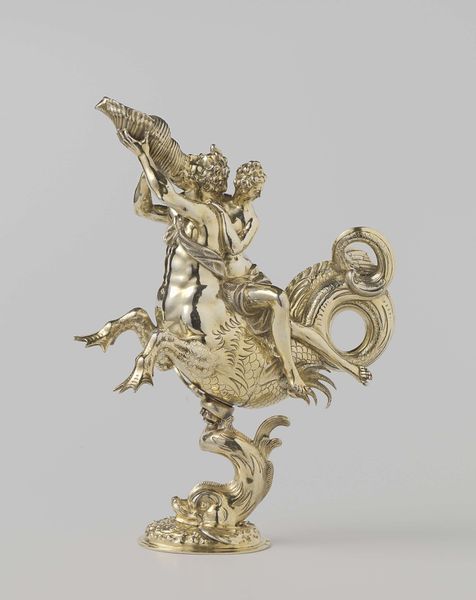
gold, ceramic, porcelain, sculpture
#
neoclacissism
#
allegory
#
gold
#
ceramic
#
porcelain
#
figuration
#
sculpture
#
decorative-art
Dimensions: height 10.3 cm, width 10.4 cm, depth 7.8 cm
Copyright: Rijks Museum: Open Domain
Editor: Here we have an ornate porcelain cup with a winged female figure, made in Limoges around 1800. It’s absolutely stunning, but the stark contrast between the gold and the white porcelain gives it a strangely detached feel. What are your initial thoughts about this piece? Curator: The immediate reaction is a focus on the object's formal properties. The smooth, cool porcelain of the figure contrasts dramatically with the gilded ceramic body. The asymmetry of the winged figure acts as an active, opposing force to the cup's otherwise classical symmetry. The line created from the drape of the maiden's dress is subtly mirrored by the swag motif around the cup itself. Editor: That’s a great point about the symmetry! Do you think that was a conscious decision on the part of the artist? Curator: Possibly. The success of Neoclassical design hinges on how disparate materials harmonize in a shared pictorial space. The wings also stand out as not quite belonging. This produces a dynamism at odds with what we may expect from this era, and forces us to read the work using multiple semiotic registers. Is this an earthbound Psyche? Editor: Hmm, I hadn't thought of that reading before. It's like the wings suggest movement, but the static porcelain freezes her in time. Curator: Precisely. And notice how the gilded surface draws the eye, making the utilitarian function secondary to its sculptural form. It transcends mere utility to become an exploration of line, form, and texture. Is there anything that you find most captivating about the artwork? Editor: I hadn't considered it in that way. Now I see how the interplay between materials elevates the object beyond its function. Thanks! Curator: Indeed. Appreciating how different elements collide makes us perceive it afresh.
Comments
No comments
Be the first to comment and join the conversation on the ultimate creative platform.

